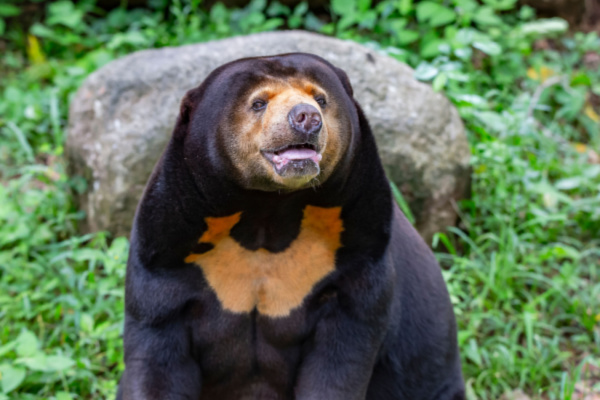As Fox News reports, Cambodian sun bears Jamran and Bopha didn’t have a great start in life — but their luck turned around after a wildlife organization rescued them and transferred them to the Perth Zoo in South Perth, Australia. The zoo recently gave animal lovers a behind-the-scenes view on Facebook of the two bears’ health checkups.
While the bears have been with the Perth Zoo for 15 years, the zoo noted that “regular medical checks” have helped them ensure that Jamran and Bopha are in “tip-top shape,” after the years the two bears spent as “victims of the illegal wildlife trade.” The vulnerable bears, each poached as cubs, lived in unfit conditions before they arrived at the zoo in January 2007. Jamran was found hog-tied at a Cambodian restaurant, where he was being kept as menu option. The confinement led to long-term damage to Jamran’s paws. Bopha, on the other hand, was kept as an “illegal family pet.”
At the zoo’s veterinary hospital, medical experts keep an eye on Jamran and Bopha’s body condition, dental health and joint mobility. “The bears came from harsh beginnings, and our keepers invest a lot of time in developing relationships with them to ensure they are feeling comfortable,” Kaylee Martin, the Perth Zoo’s senior media and communications coordinator, said in an interview with Fox News Digital. Activities for the bears include “lots of handfeeding and enrichment training,” Martin said.
Free the Bears, an Australian wildlife conservation and animal welfare organization, is the group that rescued Jamran and Bopha. The organization works with local communities and governments in Asia to save sun bears. The two animals were transferred to the Perth Zoo at age six (Jamran) and four (Bopha) — and made their first public appearance in February 2007. Fast-forward to 2022 — and the bears receive regular health checkups, special diets and enrichment activities.
This month’s checkup found that Jamran and Bopha were healthy and only needed a “good dental scale and polish to get rid of some calculus build-up” on their teeth. “X-rays and mobility checks are particularly important for Jamran, as he sustained some long-term injuries to his paws from being tied up before his rescue,” said Rebecca Vaughan-Higgins, senior veterinarian at the Perth Zoo Vet Hospital, in a press release. “We like to keep a close eye on his paws to make sure he doesn’t have any pain or mobility issues that may need to be treated,” she continued. The Perth Zoo added that Jamran and Bopha “are looking healthy for their age.”
Sun bears can typically live up to 25 years in the wild, according to National Geographic. The world’s oldest sun bear on record was Tsuyoshi, a male bear who lived until the age of 32, at the Tokuyama Zoo in Yamaguchi, Japan. Sun bears are native to tropical forests in Southeast Asia and there are two subspecies — the Malayan sun bear and the Bornean sun bear — that vary in size. Typically, they have black fur with brown patterns and curved claws; they can grow between four and five feet in length; and they weigh between 60 and 150 pounds. Exact population numbers aren’t certain, but sun bears are considered a vulnerable species, according to the World Wildlife Fund for Nature, an international conservation nonprofit. Poaching, dwindling resources and habitat loss are the major threats to sun bears in the wild.
—
Photo Credit: Teerayuth Mitrsermsarp / Shutterstock.com
